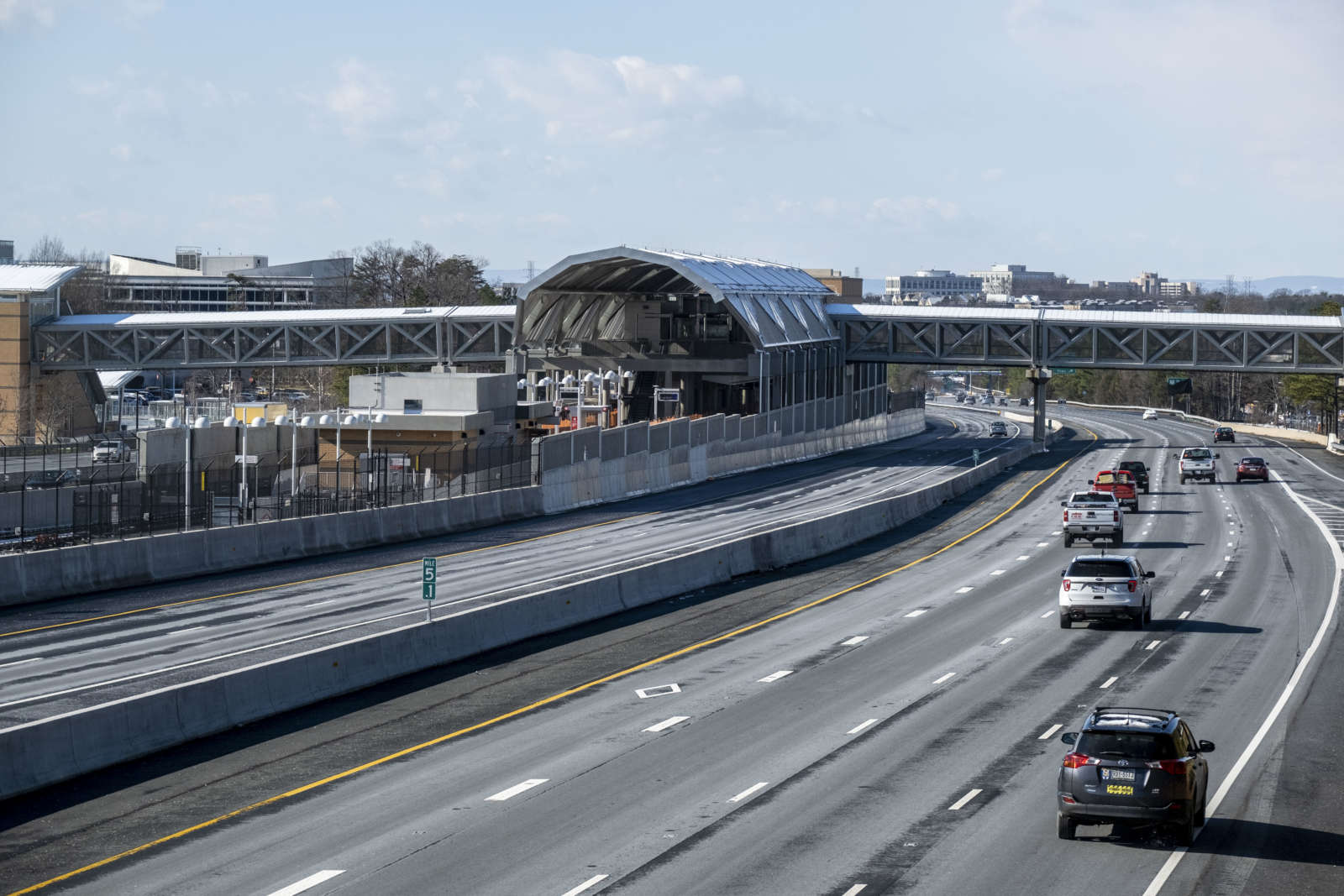The timeline for completion of the second phase of the Silver Line continues to be the subject of uncertainty.
Phase II of the Silver Line has the potential to open in the fall of 2021, at the earliest. That is subject to change, however, as there are multiple issues that must be resolved first.
Laura Mason, head of capital delivery for Metro, discussed 28 issues with Phase II of the Silver Line project during Metro’s Safety and Operations Committee meeting on Dec. 10. She detailed the status of 14 quality issues previously brought forth, as well as 14 unresolved issues.
Of the 28 total issues discussed during the meeting, 10 are unresolved, eight are underway where a tentative agreement exists and resolution is in progress, and 10 are resolved. Metro will require the resolution of the issues by the Metropolitan Washington Airports Authority (MWAA) and its contractors before accepting the project.
When MWAA reaches a substantial completion date (SSCD) after resolving issues to an acceptable level by Metro, Metro will conduct 150 days of operational readiness testing and pre-revenue activities before the potential start of service. MWAA currently projects a SSCD of April 1, 2021.
“Based on an April substantial completion, that would yield a tentative forecast of a start of service in the fall of 2021,” Mason said.
“However, we maintain that Metro will not set a date until all identified issues have been resolved to meet our acceptance and we have a clear path to an acceptance of the project.”
She clarified that MWAA’s response to the unresolved issues will determine the path forward and the timing of the ultimate acceptance or rejection of the project.
The 14 new issues presented at the meeting consist of four categories: component failures, stations and systems, yard buildings and other open issues with resolutions already underway.
“Individually, each of these issues is not on critical path. However, taken together, they represent concerns to the acceptability of the project,” Mason said.
The issues with the yard buildings involve safe occupancy and correcting problems to ensure Metro’s ability to use the facilities to maintain its fleet of rail vehicles once the line goes into service.
The component failures brought forth detail a collection of components that require replacement even before the system has opened for operations. Mason cited concerns “about the durability of the project” when discussing the component failures.
For example, the contractor has replaced more than 1,500 insulators that were exhibiting cracks as of April 2020. Several thousand damaged track fasteners have also required replacement.
Mason said the damage to the direct fixation track fasteners is one of the biggest areas of concern. The fasteners, which are used to hold the rail in place at the appropriate height and angle, typically have a lifespan of 20 to 30 years. She did label the issue as underway after conversations with MWAA and its contractor.
Two other primary concerns she listed are the installation of the station platform pavers and deficiencies of cross bond spacing.
The station platform paver installation was initially identified as an issue after Phase I and brought to MWAA’s attention in late 2017. Issues with the installation consisted of systemic joint failures at pavers, water penetrating setting bed, and significant efflorescence deposits at the platform edges.
The installation problem is considered a maintenance issue, not a structural issue, for the platform.
The cross bonds spacing issue exists in 20 locations that Metro identified as deviating from design criteria and industry practice. It is regarded as a high-risk item, but a resolution to address the issue is already underway.
“There are and will continue to be other issues that come up, and we will try first to resolve them at the project level,” Mason said.
“We’ve also implemented bi-weekly executive coordination meetings for technical review between myself, my counterpart at the Airports Authority and executives from the contractor teams.”
The project has faced a number of issues that have delayed its completion. More than 11% of the concrete panels at five of the six new stations on the extension were discovered to have cracks that needed to be repaired.
Issues with concrete and leveling were also found in September 2019, while defective concrete rail ties delayed progress in March 2019.
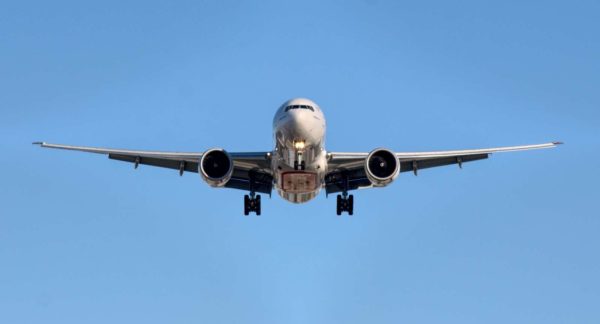
Within the last year, some Reston residents have reported concerns about increased airplane noise in areas where it previously wasn’t a nuisance.
Although changes in flight patterns have resulted in airplanes flying at lower altitudes over neighborhoods across the country, the Federal Aviation Administration says that there have been no such changes in Reston and Herndon that could explain the spike in complaints.
In some cases, residents say planes are flying so low “you can see their tail logo.”
Nanci Jewell, who lives on Quorn Lane in Reston, says that several neighbors have noticed the issue in recent months.
“We’ve always been right under a flight path but it’s never been like this,” Jewell said. “There are whole segments of the day and night when the noise is unbearable.”
In an unscientific poll by Reston Now on Feb. 6, nearly 57 percent of respondents said they noticed an increase in airplane noise. Roughly 33 percent of respondents said they noticed no change and at all. The remainder of the 1,412 total respondents said they were either unsure or didn’t know.
Kevin Wiley, a South Lakes resident for 15 years, says there’s no question of a difference in noise levels.
“In particular, ever so often we get a very loud, large aircraft flying low over our house. It is unmistakable.”
Similar concerns were reported by residents near Glencourse Lane, Armstrong Elementary School, South Lakes Village Center, and North Point Village Center.
The Metropolitan Washington Airports Authority also told Reston Now they haven’t noticed an uptick in complaints from residents affected by more noise.
“We’re not aware of any modifications to the normal flight paths or typical altitude assignment for air traffic operating at and around Dulles International,” an MWAA spokesperson said.
Communities across the country have sounded off against NextGen, a $40 billion nationwide program designed to modernize air traffic control.
FAA officials say that the system will save $160 billion through 2030 in fuel, maintenance and other costs.
Residents concerned about aircraft noise can file a complaint online.
Photo via Unsplash
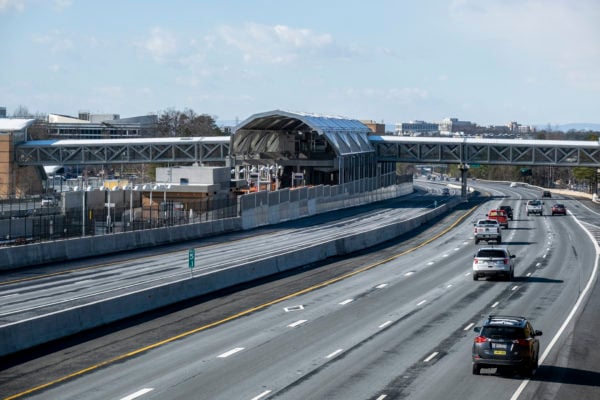
More delays are expected before the 11-mile extension of the Silver Line, which includes stations in Reston Town Center, Herndon, and Innovation Center.
According to a report by NBC 4, officials say its possible trails will not be rolling until 2021.
Service was expected to begin over the summer, but due to delays with electronic testing and deficiencies in concrete panels and other structural components, opening day was pushed to December 2020.
Metro has not yet indicated when it plans to accept the project from the Metropolitan Washington Airports Authority.
Staff photo by Jay Westcott
The Metropolitan Washington Airports Authority Board of Directors voted Wednesday (Nov. 14) to increase rates on the Dulles Toll Road for the first time since 2014.
The hike will raise the toll from $2.50 to $3.25 at the main toll plaza and from $1 to $1.50 on ramps, starting in January. The rate increases are necessary to fund the Silver Line extension project and improvements on the Dulles Toll Road, according to the MWAA.
The decision came “after careful consideration of public input received at the three toll rate public hearings held this summer, the public comments received on-line and the recommendation of the Dulles Corridor Advisory Committee,” said Warner Session, chairman of the Airports Authority Board.
In 2014, an agreement froze increases before tolls rose again to continue funding Silver Line construction. “Under the contract governing construction of the Silver Line, the Airports Authority is required to use revenues from the toll road to help fund the [Silver Line] project,” according to a Nov. 14 MWAA press release, adding that other funding includes Fairfax and Loudoun counties, the Commonwealth of Virginia, the Airports Authority and the federal government.
Last month, a federal appeals court in Richmond affirmed the dismissal of a lawsuit challenging the tolls helping to fund the Silver Line construction.
MWAA held a public hearing in Reston back in July to hear feedback on the proposed rate increases. The Dulles Corridor Advisory Committee reviewed and recommended the rates adopted by MWAA’s Board, according to the press release.
The next expected toll rate increase is planned for 2023.
Photo via MWAA
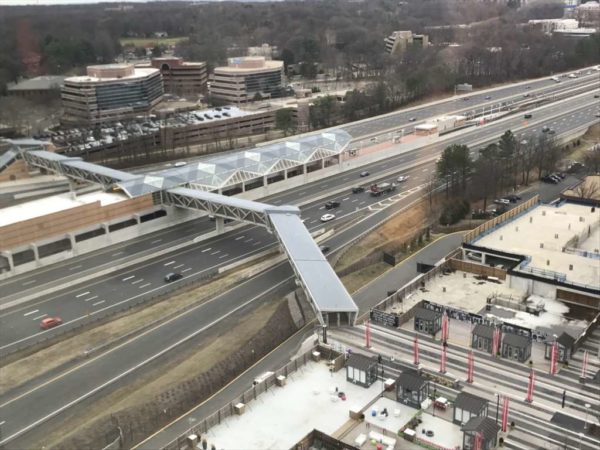
Commuters on the Dulles Toll Road could pay 75 cents more at the main toll plaza and 50 cents more at each ramp. The proposal will be presented to the Metropolitan Washington Airports Authority’s Board of Directors on Wednesday (June 20).
If approved by the board, tolls would increase from $3.50 to $4.75 for most one-way trips beginning in January. Rates would be higher for larger vehicles.
In 2019, tolls are expected to generate $198.7 million in revenue, nearly 30 percent more than the currently generated revenue. Despite projected increases in revenue, the number of toll transactions is expected to decrease by 6.4 percent next year due to declines in road usage during weekends and off-peak hours.
A nearly 1.5 percent increase is expected until 2023 when the next planned toll increase is scheduled to take effect.
Public hearings on the proposal are set for July 11 in McLean, July 17 in Reston and July 19 in Ashburn. During the meetings, attendees can discuss their thoughts with authority officials, as well as whether or not the board should switch to electronic-only tolling.
The board is expected to vote on the final proposal in October. Plans to increase tolls have been in the works since 2009. Revenue generated from toll transactions would cover debt tied to the Silver Line.
Photo by Fatimah Waseem
For the first time since 2014, Dulles Toll Road rates could increase by about one-third next year.
Motorists have paid $2.50 at the mainline plaza and $1 at exit ramps, totaling $3.50 for the last four years.
Under the plan, tolls would rise to $3.25 at the main plaza and $1.50 at exit ramps, totaling $4.75 overall. Increases would continue in the years ahead, with a $6 toll from 2023 through 2027, $7.25 from 2028 through 2032, $8.75 from 2033 through 2037, and $10 from 2038 through 2042.
Public hearings on the proposal are set for the summer, most likely in July and August. A vote authorizing the Metropolitan Washington Airports Authority to proceed with the process for proposed rate adjustments is set for June 20. Board action on final increases would occur in mid-October.
Officials said the toll increase is necessary to prevent toll revenue from falling below the minimum required to cover debt service costs. Tolls are expected to fund about $2.8 billion of the $5.7 billion cost of the Silver Line project.
Photo by Fatimah Waseem; graphic by MWAA
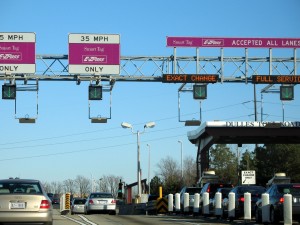 In an effort for efficiency, more lanes on the Dulles Toll Road will become E-ZPass only, the Metropolitan Washington Airports Authority said on Wednesday.
In an effort for efficiency, more lanes on the Dulles Toll Road will become E-ZPass only, the Metropolitan Washington Airports Authority said on Wednesday.
Beginning Sept. 2, MWAA will convert 19 exact-change lanes into E-ZPass lanes. First up: Westbound Fairfax County Parkways exit, far right lane.
During the conversion project coin baskets will be removed and replaced by upgraded E-ZPass infrastructure. Conversions are scheduled for unattended “exact change” lanes at the main toll plaza and exit ramps along the roadway, says MWAA. To minimize congestion, lanes will be reconfigured one at a time, with each conversion taking two-to-four weeks. When the project is complete, all toll plazas will still have at least one “full service” lane available.
“This lane conversion continues the long tradition of providing a convenient, consistent travel option for drivers in Northern Virginia,” Dulles Toll Road Manager Cyndi Ward said in a statement. “About 90 percent of drivers currently using these lanes are already paying with E-ZPass rather than coins. Full-service lanes will continue to be available at all toll plazas along the roadway for those wishing to pay with cash, but we encourage drivers to consider the added convenience of E-ZPass in order to bypass the lines associated with cash payments.”
Don’t have an E-ZPass? Sign up for one at ezpassva.com.
MWAA will announce other lane conversions as they are about to occur so drivers can plan accordingly.
Photo: Dulles Toll Road/file photo


